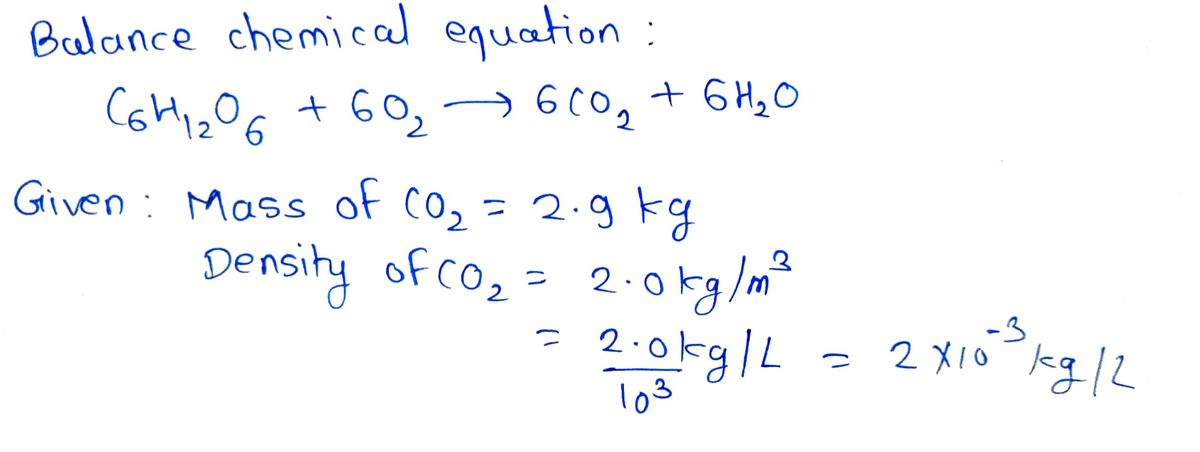The human body burns glucose (C6H₁2O6) for energy according to this chemical reaction: C6H12O6 +60₂-6CO₂ + 6H₂O The products of the reaction are carbon dioxide (CO₂) and water (H₂O). Interestingly, all of the carbon dioxide and much of the water exits the body through the lungs: on every breath, the average person exhales 500. mL of air, which is typically enriched to 4% CO₂ and 5% water vapor by volume. In short, when a person loses weight by dieting, the weight that is lost actually departs his body as a gas, every time he exhales. Each kilogram of body fat lost requires exhaling about 2.9 kg of carbon dioxide. Calculate how many breaths it takes an average person to "exhale" 2.00 kg of fat. Round your answer to the nearest thousand. You'll need to know that the density of CO₂ is 2.0 kg/m³. 0 x10 X E olo Ar M
Thermochemistry
Thermochemistry can be considered as a branch of thermodynamics that deals with the connections between warmth, work, and various types of energy, formed because of different synthetic and actual cycles. Thermochemistry describes the energy changes that occur as a result of reactions or chemical changes in a substance.
Exergonic Reaction
The term exergonic is derived from the Greek word in which ‘ergon’ means work and exergonic means ‘work outside’. Exergonic reactions releases work energy. Exergonic reactions are different from exothermic reactions, the one that releases only heat energy during the course of the reaction. So, exothermic reaction is one type of exergonic reaction. Exergonic reaction releases work energy in different forms like heat, light or sound. For example, a glow stick releases light making that an exergonic reaction and not an exothermic reaction since no heat is released. Even endothermic reactions at very high temperature are exergonic.
The human body burns glucose C6H12O6 for energy according to this
The products of the reaction are carbon dioxide CO2 and water H2O.
Interestingly, all of the carbon dioxide and much of the water exits the body through the lungs: on every breath, the average person exhales 500.mL of air, which is typically enriched to 4% CO2 and 5% water vapor by volume. In short, when a person loses weight by dieting, the weight that is lost actually departs his body as a gas, every time he exhales. Each kilogram of body fat lost requires exhaling about 2.9kg of carbon dioxide.
Calculate how many breaths it takes an average person to "exhale" 2.00kg of fat. Round your answer to the nearest thousand.
You'll need to know that the density of CO2 is 2.0/kgm3.

Given :

Step by step
Solved in 3 steps with 3 images









